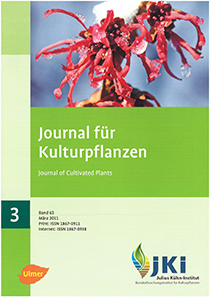Forest health and forest protection 2010 in the Federal Republic of Germany
DOI:
https://doi.org/10.5073/JfK.2011.03.01Keywords:
Forest health and forest protection 2010, insect pests, forest diseases, abiotic damageAbstract
The report gives an overview of the situation on forest health and forest protection during the year 2010 in the Federal Republic of Germany. The activities in forest protection were dominated by the effects of various storms, which caused approximately 3.8 Mio. m3 of storm loss in Germany. Later in the year there were more symptoms of dying tissue on the remaining stocks, because of root and bark injuries during the storm situation. Immediate harvesting of damaged wood, the cool and wet weather in spring as well as the effective monitoring measures prevented outbreaks of spruce bark beetles (Ips typographus, Pityogenes chalcographus). Weather conditions during the year were responsible for few problems with forest pests in 2010. Only low aerial treatments were necessary. In pine forests of north-eastern Germany chemical control against pine moth (Dendrolimus pini) was done. Also in oak forests of north Bavaria insecticide were used against gypsy moth (Lymantria dispar). Furthermore the outbreak of oak processionary moth (Thaumetopoea processionea) continues and regional treatments were performed. Favorable weather conditions during the vegetation period resulted mainly tree diseases. For example the cool-moist conditions in spring were favoured needlecast fungi (Rhabdocline pseudotsugae, Phaeocryptopus gaeumannii). Other hand, caused the warm and dry summer a strong contamination with oak mildew (Erysiphe alphitoides) which, in combination with heavy insect damage, caused vitality losses. The new ash decline remains at a high level and the sooty bark disease (Cryptostroma corticale) obviously has established as a new disorder on maple in Germany.
Downloads
Published
Issue
Section
License
The content of the journal is licensed under the Creative Commons Attribution 4.0 License. Any user is free to share and adapt (remix, transform, build upon) the content as long as the original publication is attributed (authors, title, year, journal, issue, pages).
The copyright of the published work remains with the authors. The authors grant the Journal of Cultivated Plants, the Julius Kühn-Institut and the OpenAgrar repository the non-exclusive right to distribute and exploit the work.







